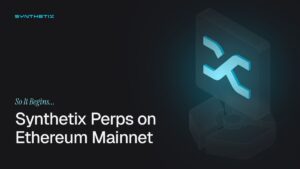Vitalik Buterin, one of the co-founders of Ethereum (ETH), has just posted a detailed warning regarding the dangers of overburdening Ethereum’s consensus past its core functions of validating blocks and securing the network.
As the Ethereum (ETH) blockchain continues to evolve as per its roadmap revealed by co-founder and developer Vitalik Buterin, the network activity has also seemed to have raked in a substantial uptick. As a result, Ethereum consensus, the process whereby blocks are validated by the proof-of-stake mechanism (PoS), faces an issue of getting overloaded.
To address the issue, Buterin published a blog post titled “Don’t overload Ethereum’s consensus,” urging that using Ethereum’s network consensus for other things could bring high systemic risks to the ecosystem and should be discouraged and resisted. The ETH co-founder explained,
“It is a natural urge to try to extend the blockchain’s core with more and more functionality because the blockchain’s core has the largest economic weight and the largest community watching it, but each such extension makes the core itself more fragile.”
Don't overload Ethereum's consensus:https://t.co/07tzyCrZcJ
— vitalik.eth (@VitalikButerin) May 21, 2023
What Are The Systemic Risks?
Buterin added that over the years, a number of proposals or ideas had floated around that suggested using the Ethereum social consensus for other purposes, such as price and data oracles, re-staking initiatives and L1-driven recovery of L2 projects. However, a certain subset of these techniques could bring high systemic risks to the ecosystem, and should be discouraged.
Buterin also highlighted the risks associated with using the Ethereum validator suite and social consensus for purposes that go beyond the basic rules of the Ethereum protocol. The-29-year-old computer programmer provided examples to illustrate the distinction between low-risk and high-risk practices.
Low-risk examples include using a validator control cryptographic proof for verification purposes or creating a web3 social network. On the other hand, high-risk examples involve using Ethereum’s social consensus to settle political disputes or forking the chain to favor certain participants.
Buterin warned the expansion of Ethereum’s consensus responsibilities increases the complexity and risks for validators. It could also create incentives to outsource decision-making to centralized entities, impacting the decentralized nature of the platform. He said,
“We should instead preserve the chain’s minimalism, support uses of re-staking that do not look like slippery slopes to extending the role of Ethereum consensus, and help developers find alternate strategies to achieve their security goals.”
VITALIK BUTERIN PROPOSES POSSIBLE SOLUTIONS TO COMBAT CONSENSUS ISSUES
At the same time, the Ethereum co-founder also offered some possible solutions and actions that could mitigate the potential risks. For price oracles, vote-based or decentralized workarounds that do not rely on appealing to L1 consensus for recovery are recommended. Complex oracles of truth could be built on top of decentralized judicial systems.
Meanwhile, when it comes to Layer 2 protocols and cross-chain bridging, careful design and minimizing dependency on external systems are essential. Finally, the use of the Ethereum validator suite to secure other chains should be approached with caution.
In a nutshell, Buterin explained the importance of preserving Ethereum’s basic consensus features and minimalism. While innovation is encouraged, overloading the Ethereum consensus with additional responsibilities carries high systemic risks.
📢Nimbus v23.5.1 is out.
It's a medium-urgency point release improving the compatibility of Nimbus with 3rd party validator clients and beacon nodes and introducing the support for incremental pruning. https://t.co/Z1MdMKUzud
— Nimbus (@ethnimbus) May 21, 2023
This comes hot on the heels after Ethereum client Nimbus said it has released an update to improve compatibility on the network and support for incremental pruning, on Sunday. As per the announcement, the update aims to improve compatibility with third-party validator clients and beacon nodes. In addition, it also introduces support for incremental pruning. For the uninitiated, pruning is the process of erasing older data to save disk space.











